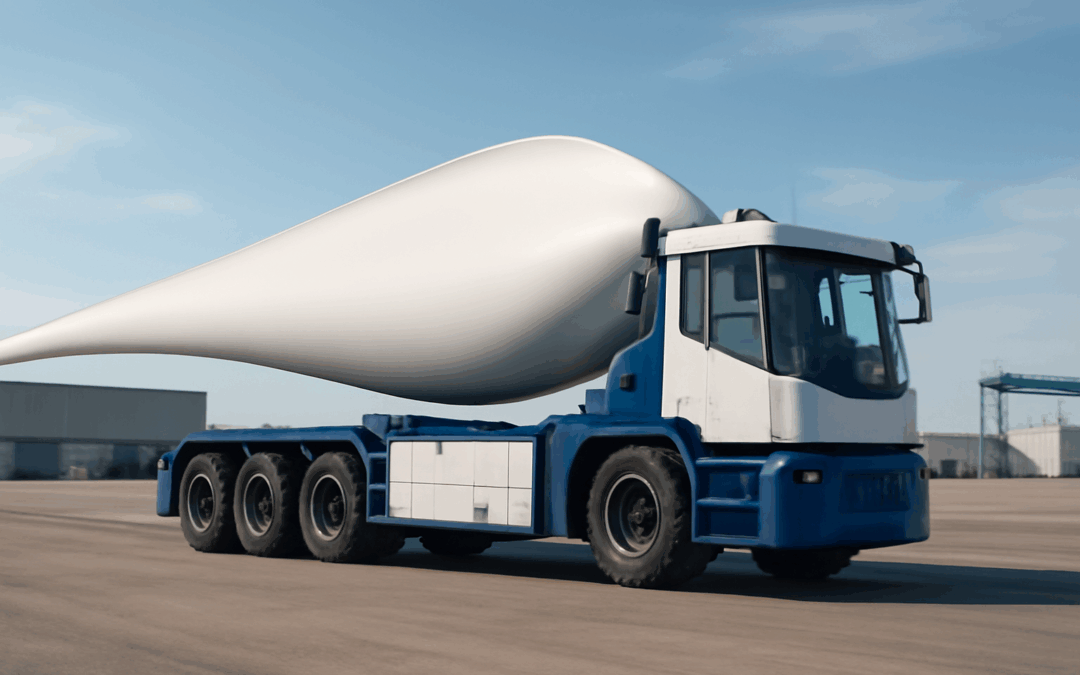In a global context where sustainability has become a strategic pillar for all productive sectors, the logistics and port sectors face the challenge of reducing their carbon footprint without compromising operational efficiency. Decarbonizing heavy cargo operations is one of the keys to achieving this. In this regard, machinery electrification, digitalization through intelligent management systems, and modular equipment design are consolidating as viable, efficient solutions already in operation.
The transition towards 100% electric fleets is not exclusive to light transport. Currently, heavy-duty electric forklifts (10 to 25 tons) and 100% electric terminal tractors are already operating in ports, intermodal platforms, and industrial facilities linked to logistics and the assembly of large wind components. These teams enable: significant reductions in direct CO2 emissions, silent operations that improve working conditions and the environment, much simpler and more economical maintenance compared to diesel alternatives, and greater energy efficiency thanks to immediate torque and electronic control. Electrification also represents a crucial step towards independence from fossil fuels and leveraging renewable energies within the logistics chain. The installation of real-time tracking and analysis devices on heavy machinery allows for continuous monitoring of key parameters such as energy consumption, battery charge status, work cycles, or the potential for failures. Thanks to this technology, it’s possible to perform predictive maintenance, anticipating breakdowns and reducing downtime; better plan resources and optimize machine usage; reduce waste of unnecessary parts and consumables; and generate environmental reports that facilitate certifications or audits. Digitalization provides not only efficiency but also transparency and analytical capability in processes that were previously opaque. Moving towards more sustainable logistics involves embracing modular design in equipment, which allows for customizing machinery according to the specific needs of each operation, facilitating component repair, updating, and replacement, significantly extending equipment lifespan, and recovering and reusing structural and mechanical elements to decrease environmental impact. Modular design aligns with circular economy principles and reinforces the environmental commitment of operators and manufacturers, particularly relevant when handling large components for sectors like offshore wind.
The adoption of these technologies directly contributes to global sustainable development goals. By promoting the use of electric machinery powered increasingly by renewables, the sector directly supports ODS 7 (Affordable and Clean Energy), replacing fossil fuels with cleaner power sources, equivalent to switching from a polluting engine to one running on sunshine or wind. Simultaneously, the substantial reduction in CO2 emissions and other pollutants through electrification and efficiency gains aligns perfectly with ODS 13 (Climate Action), representing a tangible step towards a smaller carbon footprint, akin to planting trees instead of burning coal.
Sustainability in heavy logistics is not a future trend but a current reality. The combination of electric machinery, digital technology, and modular solutions is paving the way for cleaner, smarter, and more efficient operations. As we look ahead, how quickly will these sustainable practices become the global standard, and what role will further innovations like hydrogen hybridization play in accelerating this transformation?
Did you know we have courses related to this?
Ver curso GWO Formación Básica en Seguridad
Ver curso GWO Formación Técnica Básica
